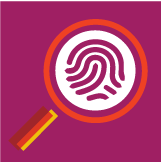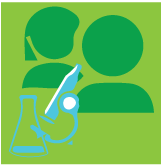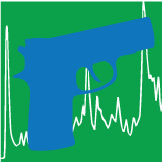Technical Tracks
Examples of Errors in Forensic Science

| Death Investigation Death investigators face the challenge of learning from the decedent only by detective work and scientific investigation. Identifying the cause, mechanism and manner of death involves certain well tested practices but is not free of controversy over some forensic pathology protocols, like shaken baby cases or uncertainty measurement of time of death. Learn causes and means to reduce error in death investigation. |

| Crime Scene Detecting, recording, collecting, packaging, transporting and preserving forensic science evidence to reconstruct criminal events is becoming ever more technologically advanced. Tools for video recording crime scenes, recording 3-D impression evidence, blood splatter interpretation and collecting traces of biological and other evidence below the limits of detection by the human eye demand more training and expertise by crime scene scientists. Learn what challenges and potential errors occur with crime scene investigation and how to reduce them. |

| Human Factors Forensic scientists have only recently come to recognize that their close relationships with prosecutors, defense attorneys and law enforcement officers that was traditionally regarded as vital to investigative teamwork might also provide unexpected bias from scientifically irrelevant but subconsciously influential information. What is the right balance of information necessary for forensic testing and sequential masking of unnecessary information? All human activities involve subconscious behaviors – learn how to identify and reduce cognitive, contextual and confirmation bias in actual casework. |

| Digital Evidence Error management for digital and multimedia evidence – from mobile phones to digital images to social media analysis – presents some unique concerns. The digital world moves extremely rapidly and a digital forensic practitioner is likely to encounter novel situations. How do you address error management when you are extracting information from a device you have never seen before, or when the system is still running and information is changing while being extracted? How do you attribute data or actions to a particular user of a computer system when the system shows signs of compromise? How do you answer when asked about an error rate? |

| Legal Factors Good lawyering and good scientific analysis of physical evidence share some things in common but objectivity is not one of them. Good scientist present conclusions in court based on objective facts they determine from scientifically valid protocols. Lawyers sum up those facts and their job is to influence the jury through advocacy. The intersection of science and the law presents challenges. Questions arise about admissibility, disclosure and defining limitations in reporting and expert testimony. Lawyers and scientists don't always agree how to proceed. Ramification of forensic science evidence in criminal proceedings – ethical and unethical expert testimony and lawyer conduct can impact appellate review. What can we learn from recent appellate rulings to improve forensic science practice and the law? |

| Quality Assurance Forensic scientists can make errors. What can the quality assurance manager do in the laboratory to reduce the incidences of error, to measure the severity of the error and take appropriate action? How does the scientist get evaluated and corrective action or retraining get appropriately applied to reduce the chance of future incidences? How do clients get informed in a timely and effective manner? Are proficiency tests adequate? Random case reanalysis? Blind proficiency testing? Laboratory accreditation? Forensic science practitioner certification? In-service training requirements? Application of standards and guidelines to ensure consistent quality analysis, report writing and expert forensic science testimony are the tools of the laboratory QA manager. What challenges does the QA manager face every day? |

| Laboratory Management Forensic science laboratory managers must be politically astute, effective negotiators, good accountants, good listeners, good detectives, good scientists, good media relations spokespersons, have squeaky clean integrity and be great leaders and role models for their staff, their superiors and their customers. The next unexpected laboratory incident looms just around the corner for the director of every crime laboratory, bar none. Managing to ensure quality, productivity and service to the criminal justice system – requires systems approaches to anticipate and proactively minimize error. What are those systems approaches? |

| Criminalistics Forensic serology, DNA, bloodstain patterns, controlled substances, toxicology, hair and fiber, paint, glass, coatings, plastics, metals, soil and dust, arson debris and explosives residue, fingerprints and other friction ridges, footwear, tire treads, firearms and tool marks, gunshot residue, and question documents fall within the scope of criminalistics – that is, the forensic science disciplines traditionally practiced in crime laboratories. How do each of these disciplines detect, measure and reduce the likelihood of errors? What do the protocols include to signal the incidence of an error? What happens when an error is detected? What lessons can be learned? Learn causes and means to reduce error. |
Created November 19, 2014, Updated December 9, 2025

